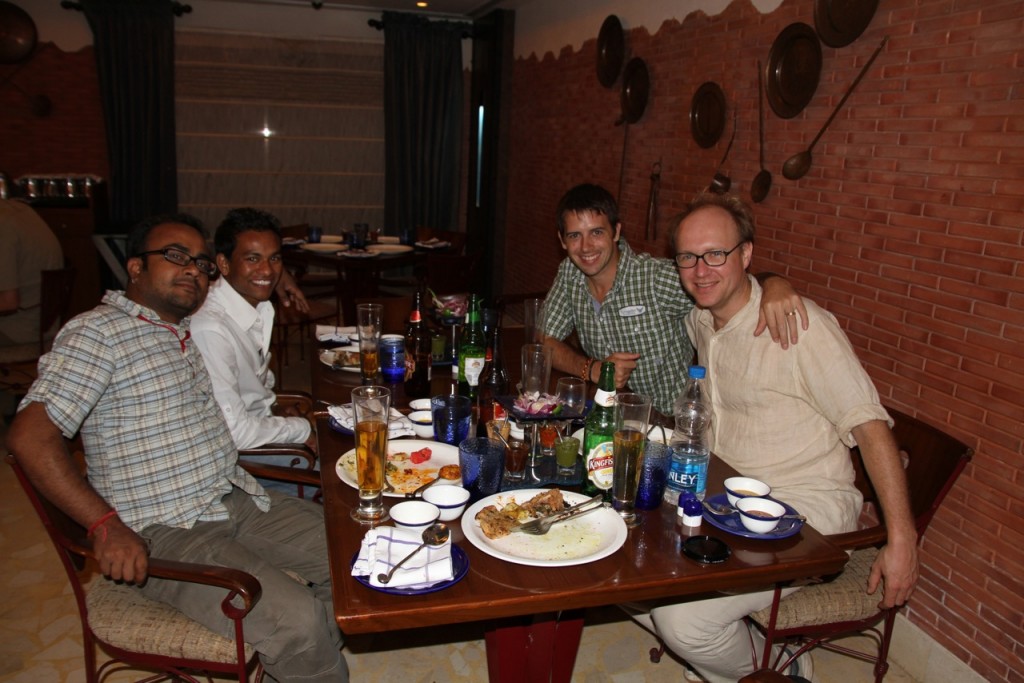Working with VPRO – A Dutch Broadcasting Experience in Varanasi
I had the opportunity to work with VPRO, a broadcasting corporation from the Netherlands, on a travel show designed for children between the ages of eight and fourteen. My responsibility was to arrange everything for them – hotels, transportation, local assistants, and most importantly, finding the right characters for the show. They shared with me only a general idea of the kinds of characters they were looking for, and it was my job to research, approach families, and schedule interviews. A month before filming, an employee of VPRO named Barbara Smith visited me in Varanasi to prepare. Since this was a children’s show, they were specifically looking for children with unique backgrounds and stories.
When I asked why they chose Varanasi, Barbara explained that they were fascinated by its cultural diversity and believed that they could capture the essence of India just within this city. I completely agreed — Varanasi is a place where India’s traditions, diversity, and everyday life all intersect.
The Search for Characters
Finding the right characters was more challenging than I expected. Initially, I thought it would be easy, but once I started meeting children and families, I realized they were suspicious and hesitant about appearing on a foreign TV show. Still, after some effort, we managed to identify fascinating children:
-
A boy who practiced Malkhamb (traditional pole gymnastics)
-
A glamorous Bollywood-style girl from a wealthy family with dreams of becoming an actress or model
-
A bright girl from a poor family studying at an NGO school
-
A young couple, representing teenage relationships
Beyond this list, I also looked out for other interesting local characters. While walking on the ghats, I met a young snake charmer. The crew loved the idea, so he also became part of the show.
The NGO Dilemma
Barbara already knew about an NGO called Saraswati Education Center, a yoga school that claimed to run educational programs for underprivileged children. She asked me to take her there to plan filming. At first, the place looked promising, and its owner, Sumit, appeared genuine. But Barbara insisted on making a surprise visit, and what we discovered shocked us — the claims of dozens of children studying there turned out to be false. We found only four or five children, mostly playing with foreigners, not learning.
Barbara was disappointed and decided to cancel their involvement. Luckily, I had already introduced her to Dora and Attila, founders of Chance India, another NGO I was working with at the time. Their program was authentic, and Barbara quickly chose a girl from Chance India to feature in the show. The most difficult character to find was the Bollywood dancer girl, as most families refused permission for their daughters to perform on television. Fortunately, I found a wonderful girl whose supportive parents agreed to let her participate.
Filming the Show
The film crew arrived a month later. At the last moment, they decided to drop the Malkhamb boy, saying it wasn’t “traditional enough.” Instead, they wanted a child who practiced wrestling at an Akhada, which was easy to arrange at one located near Assi. I also gave the crew walking tours of Varanasi, introducing them to the city’s vibrant life — the ghats, sadhus, cows, street scenes, and everyday chaos. We filmed for five days, capturing so much material that the team said they had enough content to make two episodes instead of one. That was the best compliment I could have received, and it made me very happy.
Wrapping Up
After finishing the project, we celebrated with a farewell party at the Radisson Hotel in Varanasi. Just before leaving India, the crew received an urgent call from their producer in the Netherlands. A commercial they had filmed in Rajasthan was rejected, and they had to reshoot with a rural Indian girl immediately. They asked me for help. Luckily, I managed to arrange it on the way to the airport the next morning — a perfect last-minute solution. The show was scheduled to air in February 2012, and I couldn’t wait to see it on television. Working with VPRO was not just another assignment, but a wonderful experience that combined cultural exchange, problem-solving, and unforgettable teamwork.

